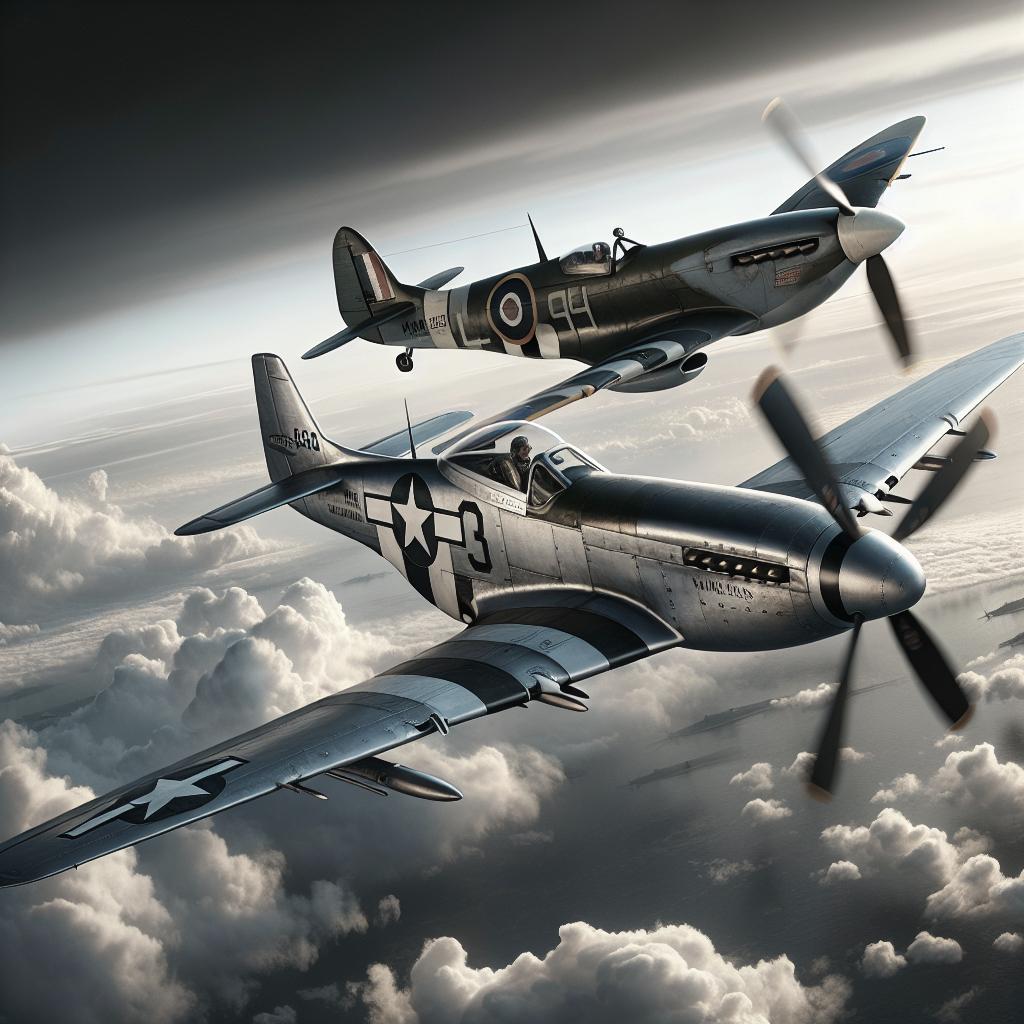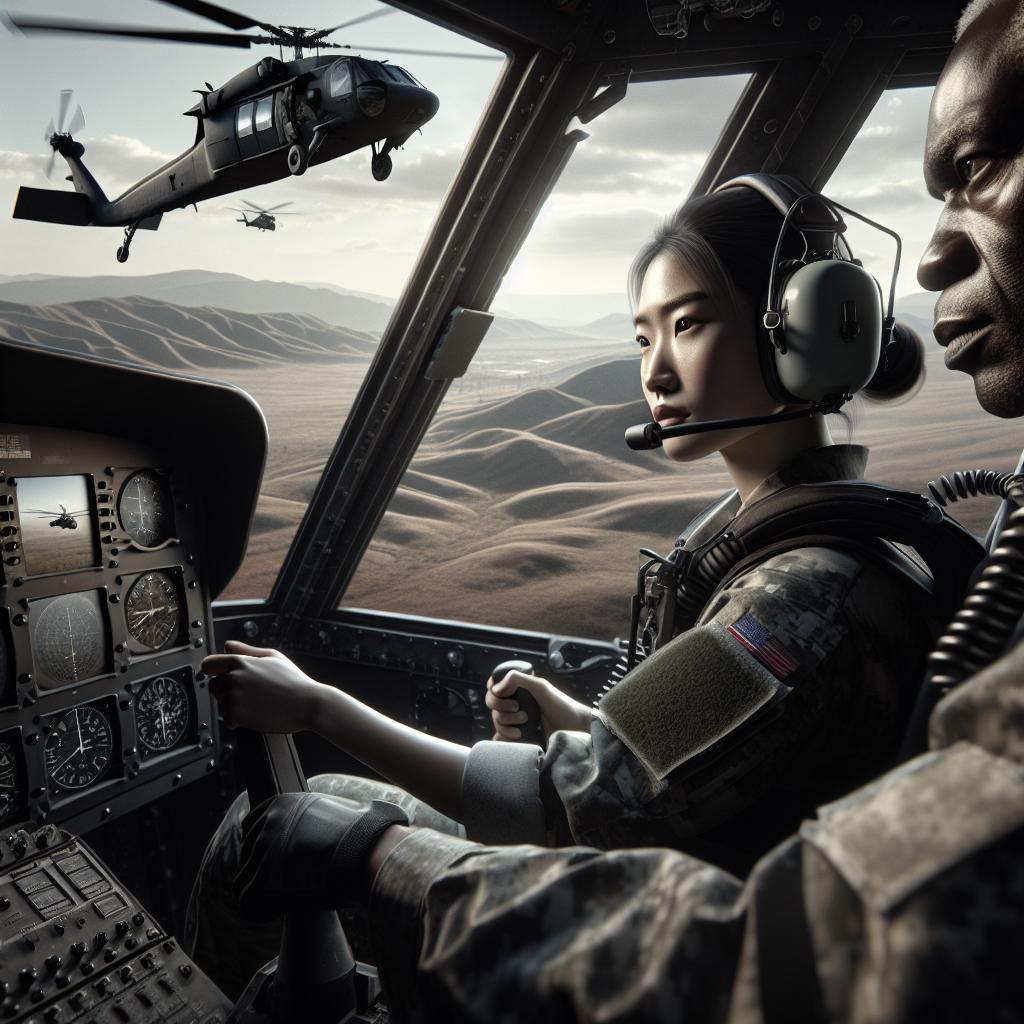“`html
Throughout history, military aircraft have played crucial roles in shaping the outcomes of conflicts and advancing technological innovations. From agile fighter jets to strategic bombers, each aircraft has its own unique story and impact on military history. This blog dives into some of the most famous historical military aircraft, highlighting their contributions, technological advancements, and the roles they played in various conflicts. We will explore an array of aircraft from different nations and eras, providing a comprehensive overview of these remarkable flying machines.
Hawker Hurricane (Great Britain)
The Hawker Hurricane was one of the stalwart fighters of World War II, particularly during the Battle of Britain. Introduced in the late 1930s, it was the first RAF aircraft to feature an all-metal stressed-skin construction, which made it much more resilient in combat. Despite often being overshadowed by the more famous Supermarine Spitfire, the Hurricane was responsible for 60% of the RAF’s air victories in the Battle of Britain.
The Hurricane was versatile, serving not only as a fighter but also as a bomber-interceptor and ground-attack aircraft. Its robustness and ease of maintenance made it a favorite among pilots and engineers alike. Additionally, it served in various theaters of war, from the deserts of North Africa to the jungles of Southeast Asia, proving its adaptability and strategic importance.
U-2 spy plane (United States)
The U-2 spy plane, developed during the Cold War, is one of the most iconic reconnaissance aircraft ever built. Designed by Lockheed’s Skunk Works division, the U-2 can fly at altitudes above 70,000 feet, allowing it to conduct surveillance without being detected by enemy radar. Its primary role was to gather intelligence during some of the tensest periods of the Cold War.
One of the most notable episodes involving the U-2 was the 1960 incident where an American U-2 piloted by Francis Gary Powers was shot down over Soviet airspace. This event led to an escalation in U.S.-Soviet tensions. Despite this, the U-2 continues to be operational and is still used today, thanks to continuous upgrades that have kept it relevant in modern reconnaissance missions.
B-52 Stratofortress (United States)
Since its introduction in the 1950s, the B-52 Stratofortress has been the backbone of the United States’ strategic bombing capabilities. Known for its long-range, high-altitude capabilities, and massive payload, the B-52 has seen action in numerous conflicts, including the Vietnam War, Gulf Wars, and in various missions in the War on Terror.
One of the B-52’s key strengths is its ability to carry conventional, precision-guided, and nuclear weapons. Despite being operational for more than 60 years, various upgrades have kept the B-52 relevant, extending its service life well into the 2040s. Its endurance and flexibility make it an indispensable asset in the U.S. Air Force’s arsenal.
F-16 Fighting Falcon (United States)
The F-16 Fighting Falcon, introduced in the late 1970s, is one of the most versatile and widely used fighter aircraft in the world. Developed initially to serve as a lightweight day fighter, the F-16 evolved into an all-weather multirole aircraft capable of air-to-air combat and air-to-ground attack missions. It is known for its agility, thanks to its innovative fly-by-wire control system and advanced avionics.
The F-16 has been adopted by numerous countries and has seen combat in various conflicts, proving its effectiveness and reliability. Its design has influenced several modern fighter aircraft, and continuous upgrades have kept it on the cutting edge of military aviation technology. The Fighting Falcon remains a key aircraft in many air forces around the globe.
MiG-21 fighter (Soviet Union)
The MiG-21, one of the most produced fighter jets in history, first took to the skies in the late 1950s. Known for its simplicity, robustness, and agility, the MiG-21 became a staple in the air forces of not only Soviet-aligned countries but also many non-aligned and third-world nations. Its versatility allowed it to serve as both a high-altitude supersonic interceptor and a capable ground-attack aircraft.
The MiG-21 saw extensive combat during the Vietnam War, where it was pitted against more technologically advanced American aircraft. Despite its relatively primitive electronics, the MiG-21’s superior maneuverability often gave it an edge in dogfights. Over the years, various versions of the MiG-21 have been produced, keeping it operational in some air forces even today.
Tupolev Tu-95 bomber (Soviet Union/Russia)
The Tupolev Tu-95, also known as the “Bear,” is a long-range strategic bomber introduced in the 1950s. With its distinctively loud turboprop engines and propellers, the Tu-95 has been a symbol of Soviet and later Russian air power for decades. Its primary role is to serve as a platform for long-range bombing missions and, more recently, for launching cruise missiles.
The Tu-95’s range and payload capacity make it a formidable component of Russia’s strategic forces, capable of striking targets far from home bases. Despite its age, continuous upgrades have kept the Tu-95 in active service. Its ability to carry nuclear weapons makes it a critical deterrent in modern geopolitics.
Bf 109 fighter (Germany)
The Bf 109, designed by Willy Messerschmitt, was one of the iconic fighters of World War II. First introduced in the mid-1930s, the Bf 109 set numerous performance benchmarks and was the backbone of the Luftwaffe’s fighter force. It played a pivotal role in the early victories for Germany and was involved in almost every major combat engagement in Europe during the war.
The Bf 109 was renowned for its excellent speed, climb rate, and firepower. Its versatility allowed it to serve as a fighter, interceptor, and reconnaissance aircraft. Despite its early technological advantages, it faced growing competition from allied aircraft as the war progressed. However, its impact and legacy in aviation history remain significant.
P-51 Mustang (United States)
The P-51 Mustang is often considered one of the finest fighter aircraft of World War II. Initially developed for the British Royal Air Force, the Mustang was later adopted by the United States Army Air Forces. Known for its long-range and excellent performance at high altitudes, the P-51 played a crucial role in gaining and maintaining air superiority over Europe.
Equipped with a Rolls-Royce Merlin engine, the Mustang was capable of escorting bombers deep into enemy territory, significantly reducing bomber losses. Its combination of speed, range, and maneuverability made it a favorite among Allied pilots. The P-51’s contributions were instrumental in the Allies’ aerial dominance leading up to the end of World War II.
Dassault-Breguet Mirage (France)
The Dassault-Breguet Mirage series, particularly the Mirage III, has been a cornerstone of French military aviation. First introduced in the 1960s, these delta-winged fighters became famous for their roles in various conflicts, including the Six-Day War, Yom Kippur War, and the Falklands War. The Mirage III was particularly known for its impressive speed and climb rate, making it an effective interceptor.
The Mirage series showcased the growing competence of France in designing high-performance military aircraft. Its success led to widespread international adoption, with many countries incorporating the Mirage into their air forces. Continuous improvements and adaptations have maintained the relevance of the Mirage series in contemporary aviation.
Mitsubishi Zero (Empire of Japan)
The Mitsubishi A6M Zero was Japan’s premier naval fighter during World War II. Known for its exceptional maneuverability and range, the Zero quickly garnered a fearsome reputation in the early stages of the war. It played a significant role in the attack on Pearl Harbor and dominated Allied aircraft in the Pacific theater for a considerable time.
However, as the war progressed, the Zero’s design flaws, such as its lack of armor and self-sealing fuel tanks, became more apparent. Advances in Allied aircraft technology eventually surpassed the capabilities of the Zero. Despite this, its early successes and unique design make it one of the most notable fighters of World War II.
A-10 Thunderbolt II (United States)
The A-10 Thunderbolt II, commonly referred to as the “Warthog,” is renowned for its unmatched ground-attack capabilities. Introduced in the 1970s, the A-10 was designed specifically for close air support of ground troops, featuring a robust airframe, heavy armor, and a powerful GAU-8 Avenger 30mm cannon. Its survivability in hostile environments made it invaluable during conflicts such as the Gulf War.
The A-10’s design focuses on durability and efficiency, allowing it to loiter over battlefields for extended periods. Its ability to take and survive substantial damage while continuing to support ground forces has earned it a legendary status among both soldiers and pilots. Despite discussions about phasing it out, the A-10 remains a crucial asset in close air support missions.
Summary of main points
| Aircraft | Nation | Role | Introduction Date | Key Features |
|---|---|---|---|---|
| Hawker Hurricane | Great Britain | Fighter | 1937 | All-metal construction, versatile roles |
| U-2 Spy Plane | United States | Reconnaissance | 1955 | High altitude, long range |
| B-52 Stratofortress | United States | Strategic Bomber | 1955 | Long range, heavy payload |
| F-16 Fighting Falcon | United States | Multirole Fighter | 1978 | Agility, versatile missions |
| MiG-21 | Soviet Union | Interceptor/Fighter | 1959 | Maneuverability, high production numbers |
| Tupolev Tu-95 | Soviet Union/Russia | Strategic Bomber | 1956 | Long range, nuclear capability |
| Bf 109 | Germany | Fighter | 1937 | Speed, climb rate |
| P-51 Mustang | United States | Fighter | 1940 | Long range, high-altitude performance |
| Dassault-Breguet Mirage | France | Fighter/Interceptor | 1961 | Delta wing, versatile missions |
| Mitsubishi Zero | Empire of Japan | Naval Fighter | 1940 | Maneuverability, range |
| A-10 Thunderbolt II | United States | Ground Attack | 1977 | Durability, close air support |
“`


